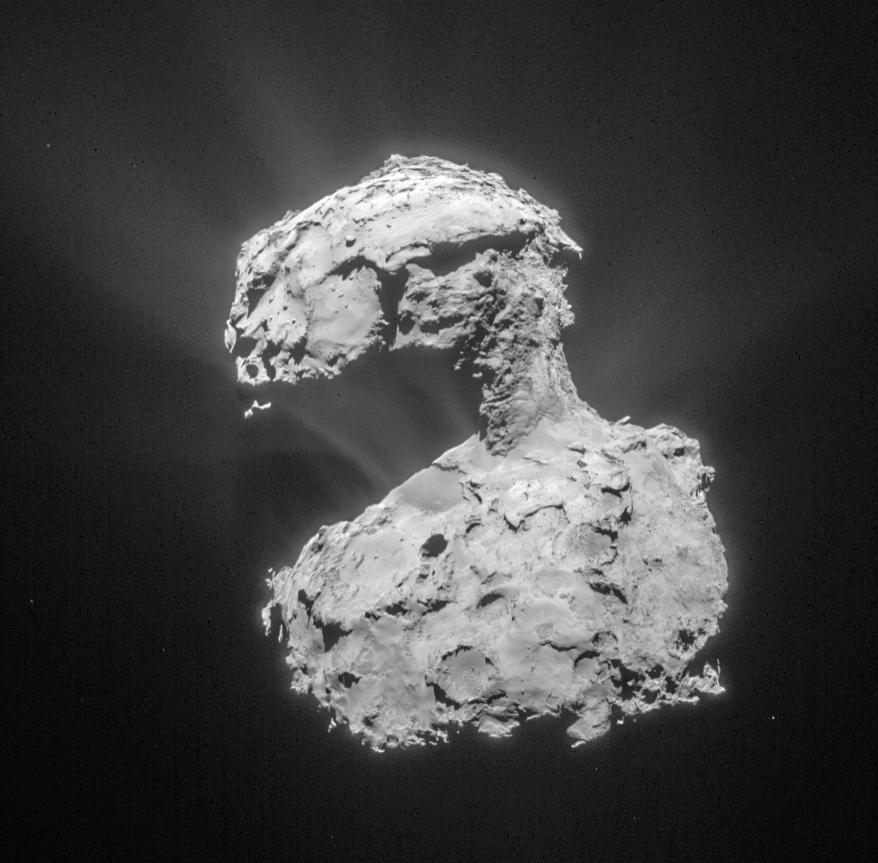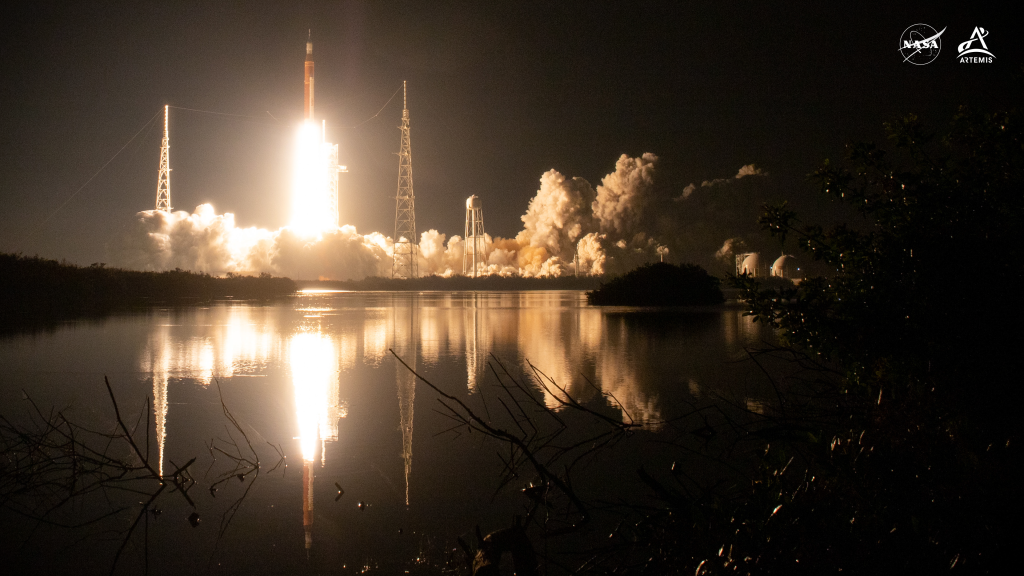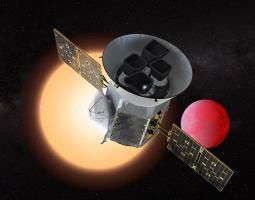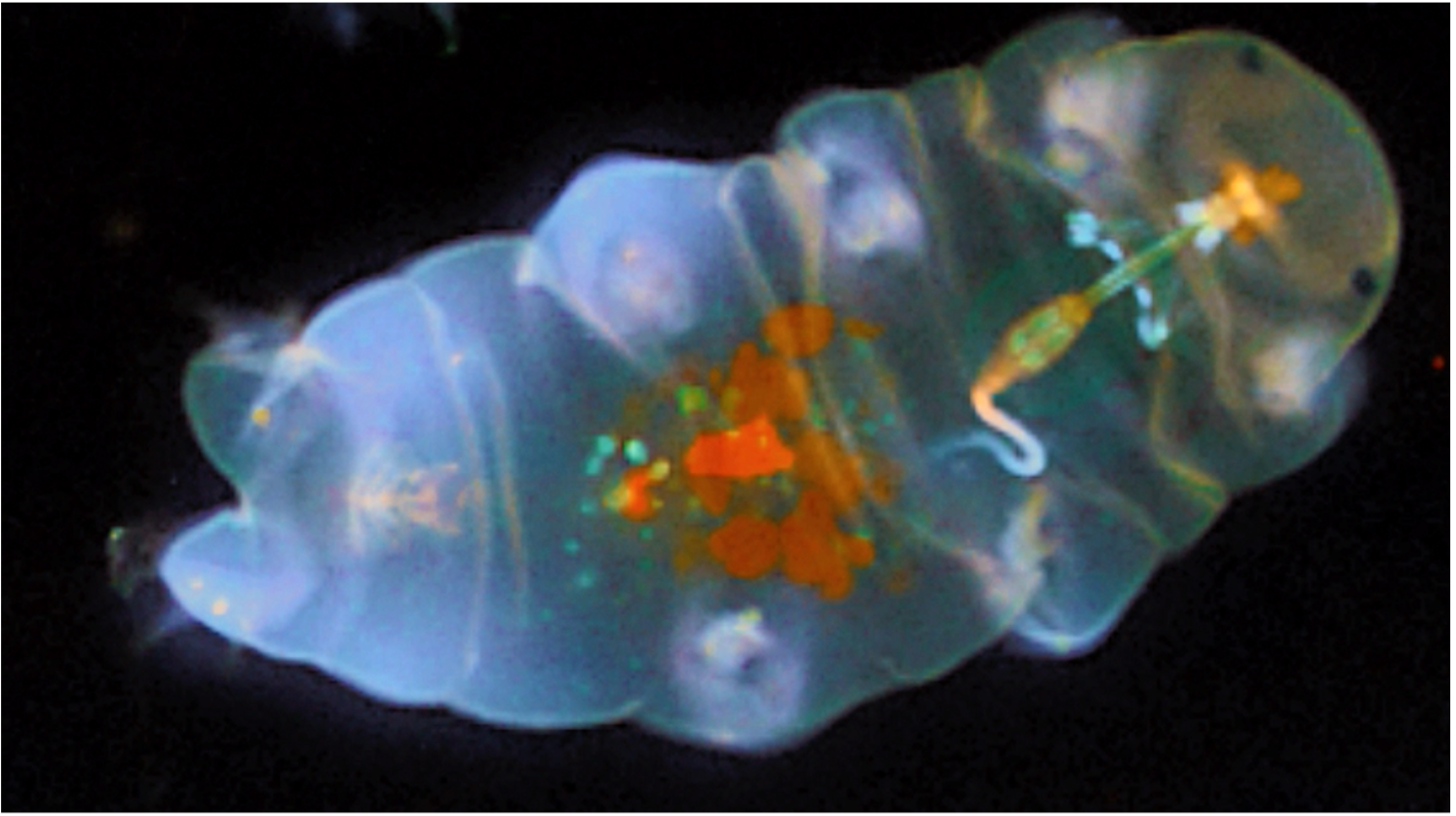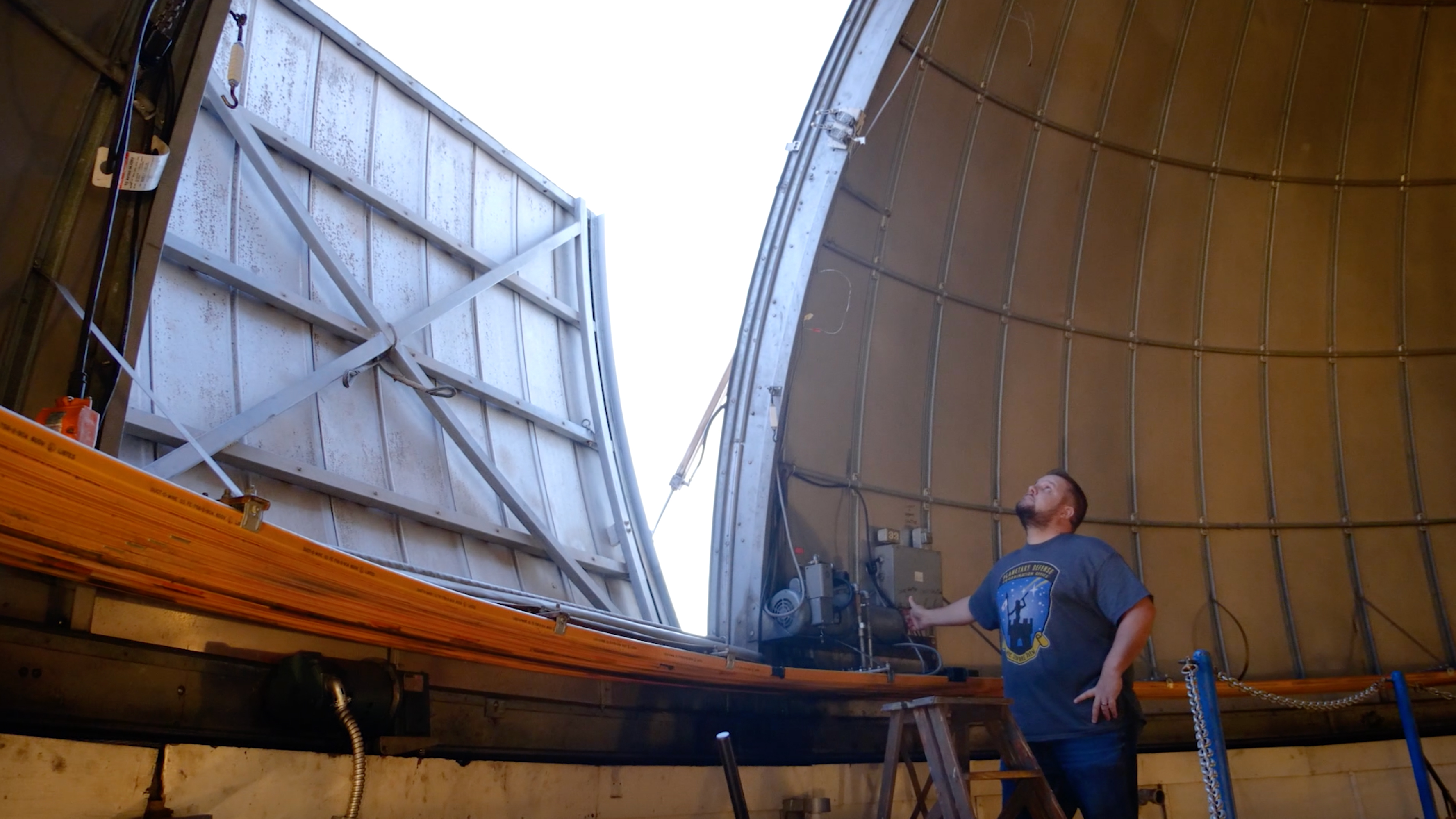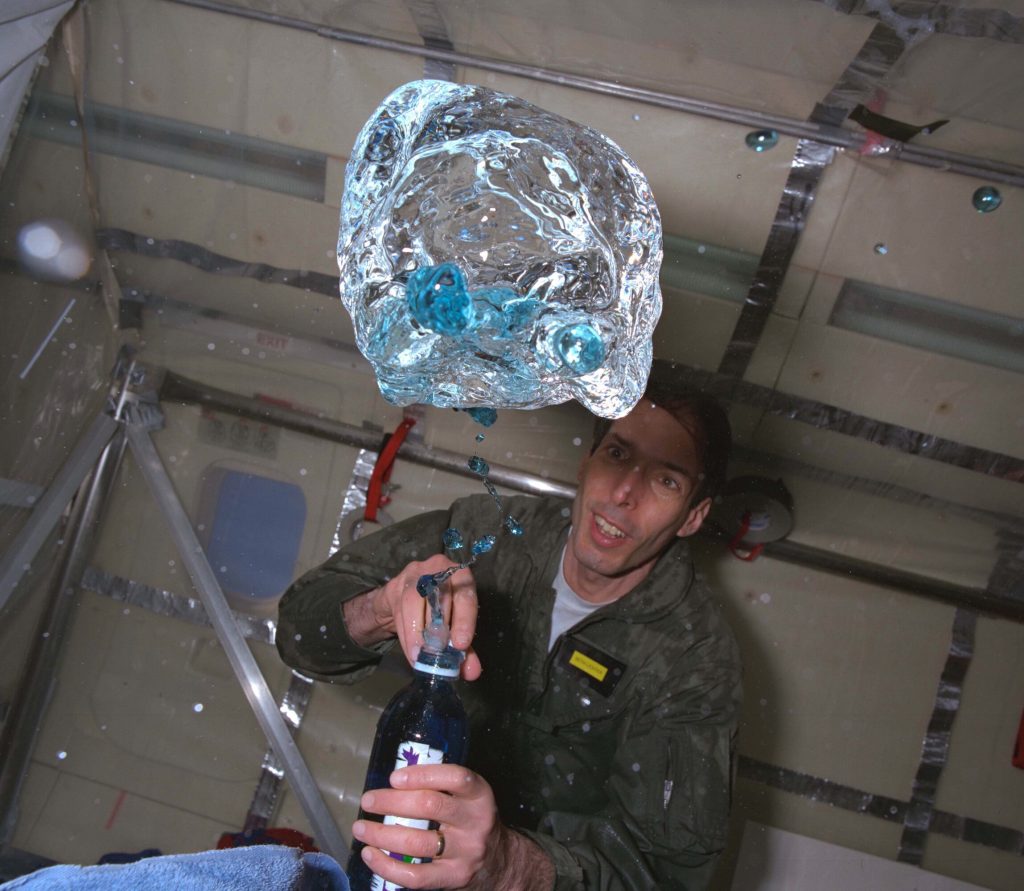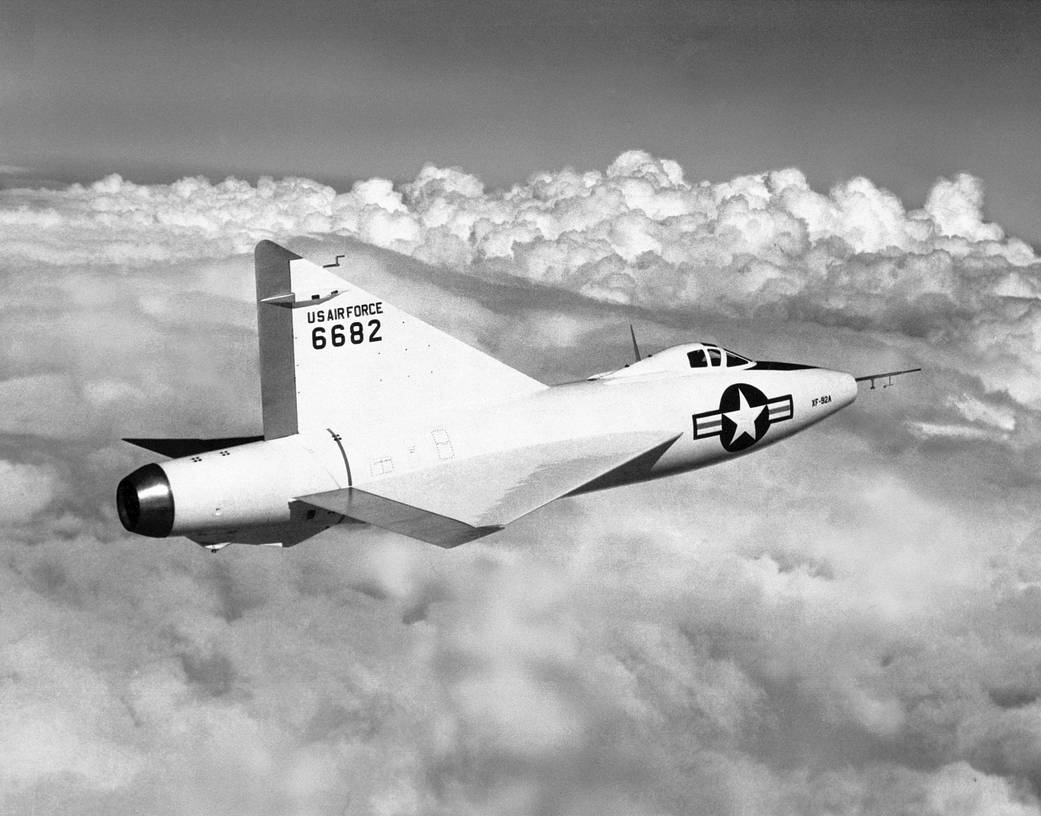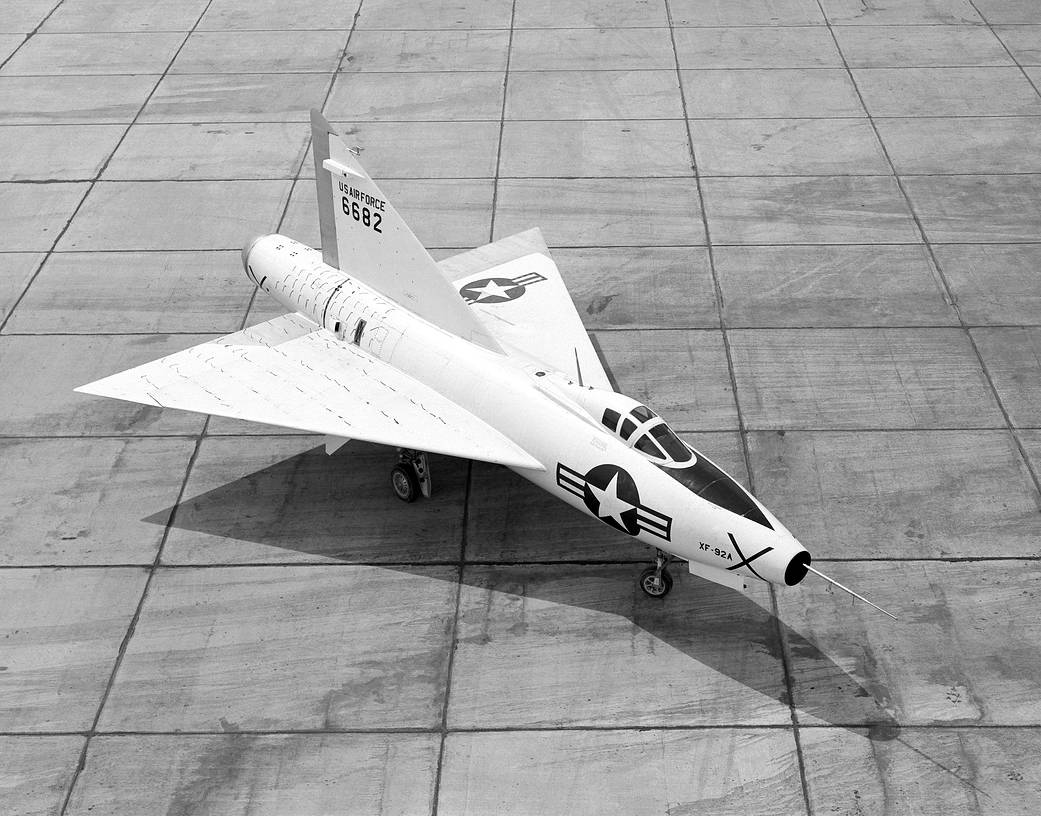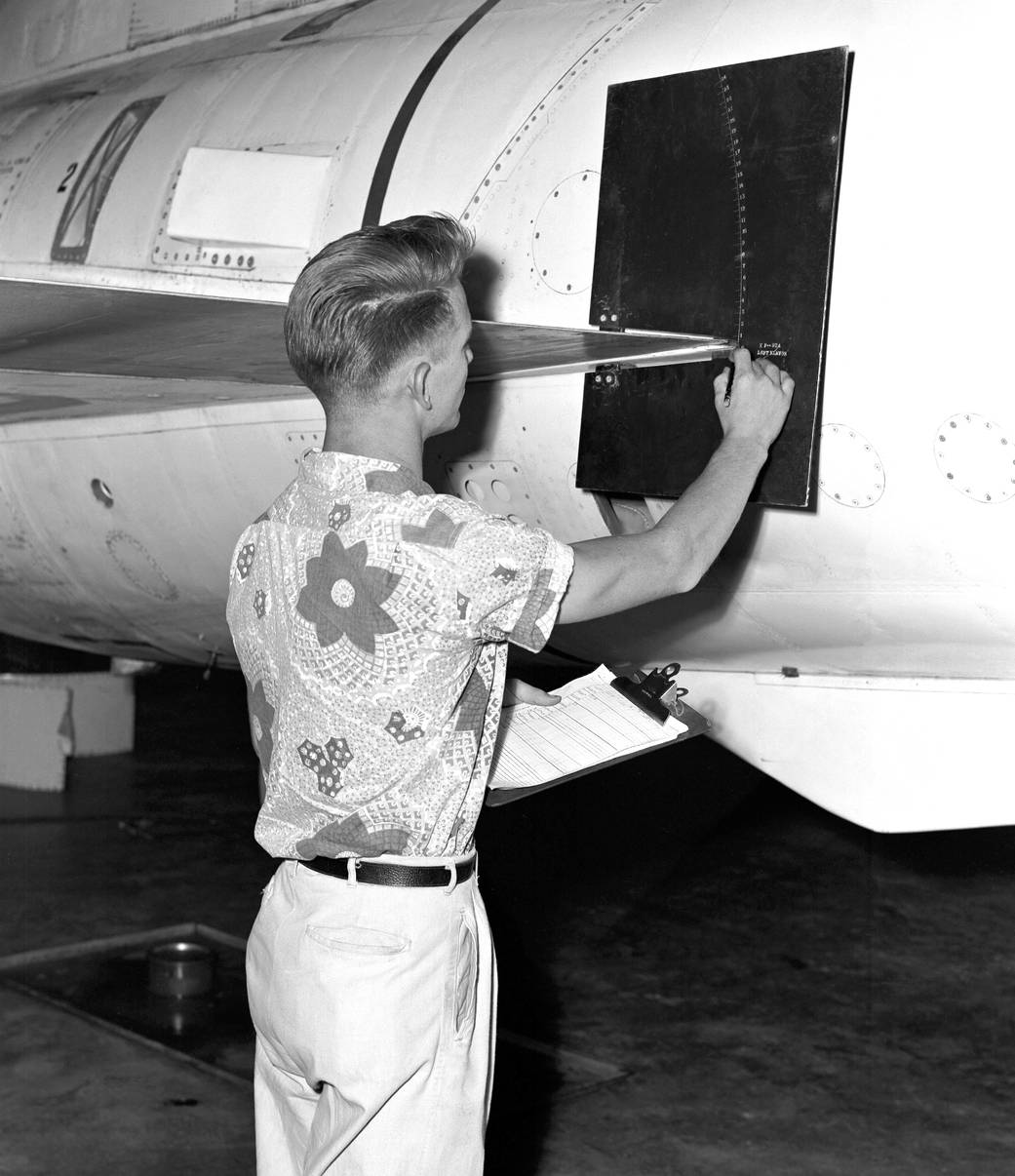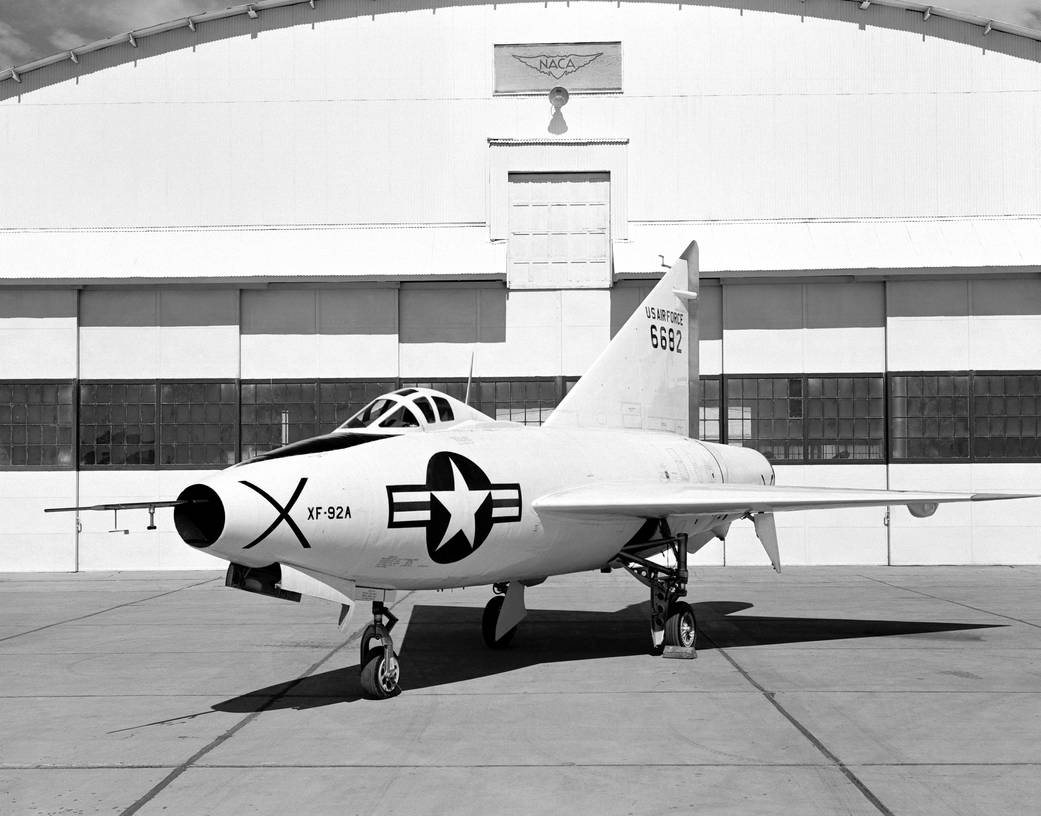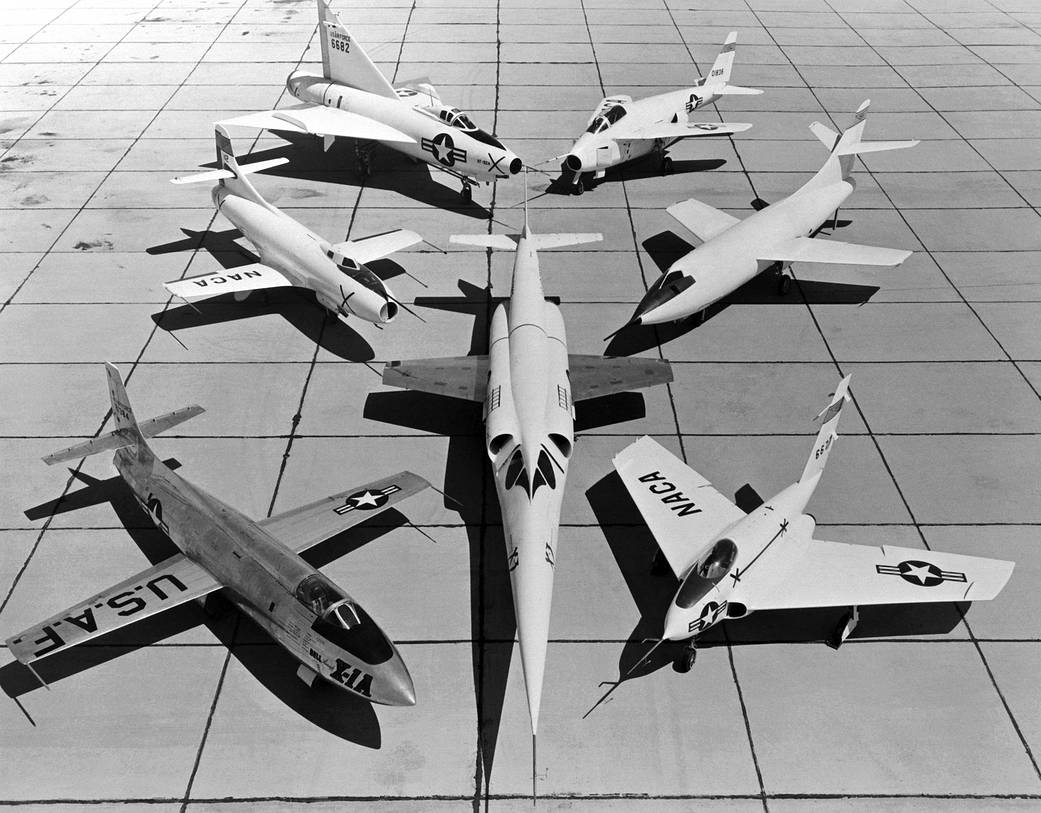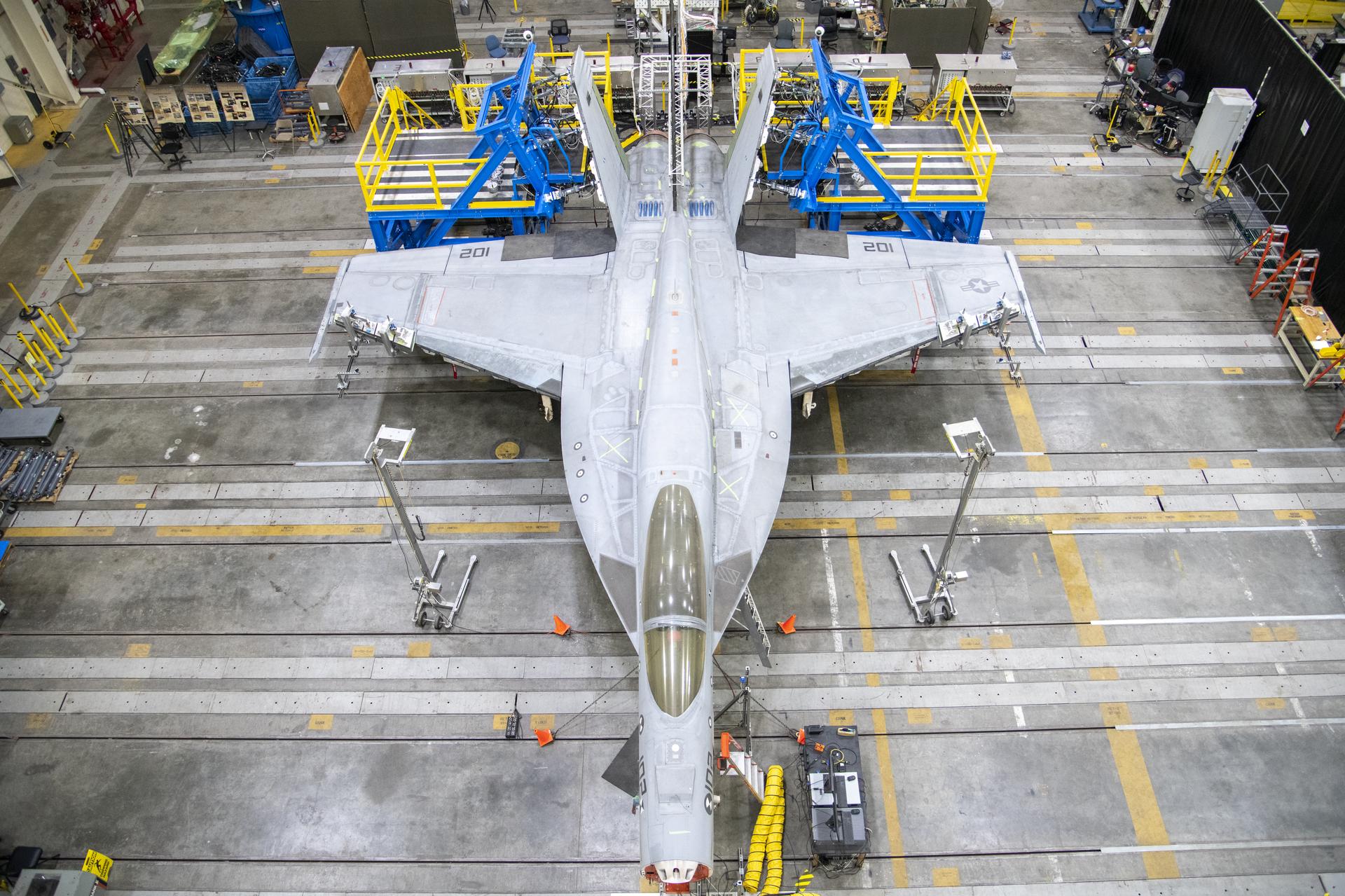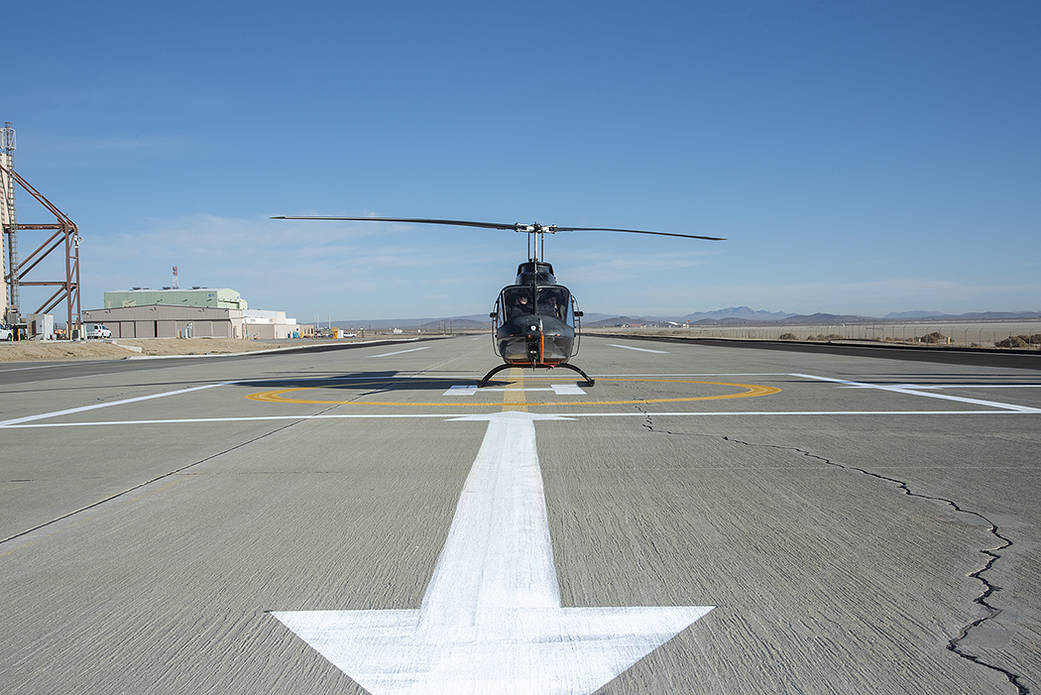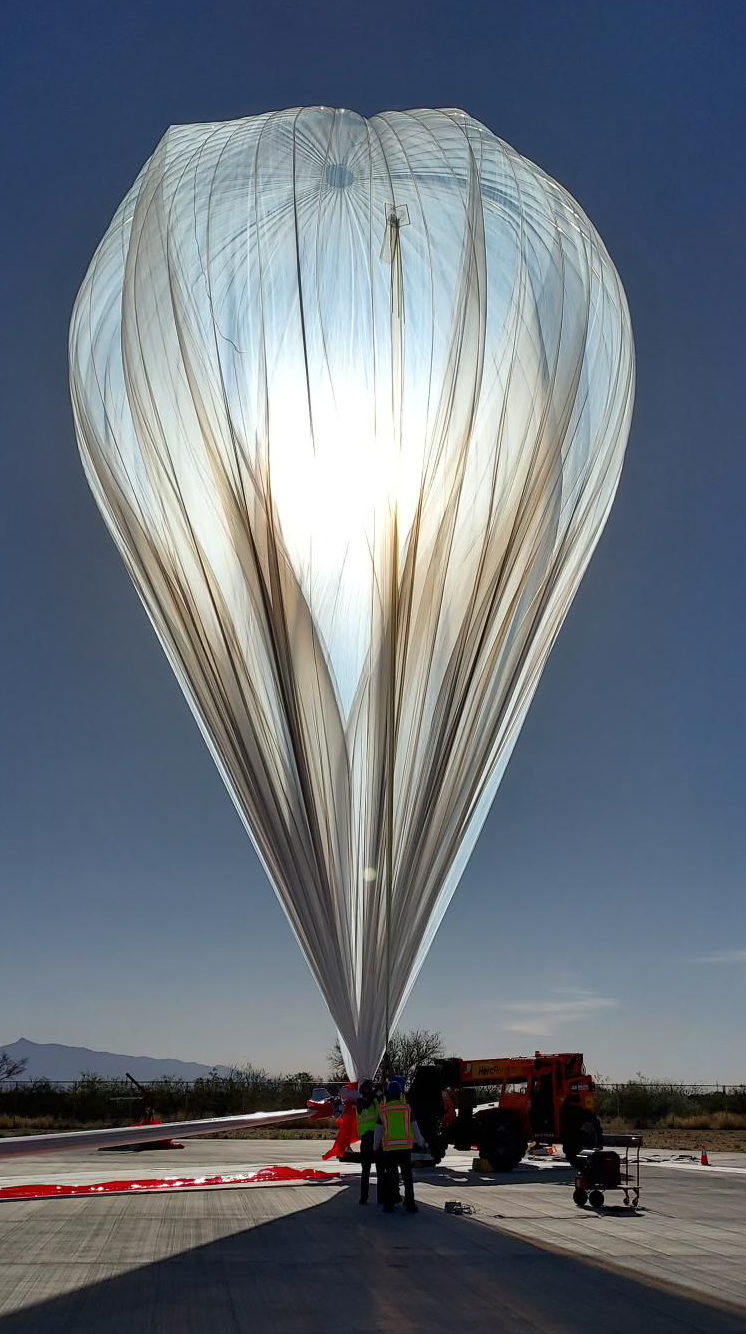By the late 1930s, it was clear that traditional straight wings and relatively thick airfoils were not suitable for flight approaching the speed of sound. As a result, new swept-back wing shapes were proposed to reduced high drag and other problems which appeared at transonic speeds.
One of these new shapes was developed by a German scientist, Alexander M. Lippisch. He proposed a triangular delta wing, so named because it resembled the Greek letter delta. This shape had a number of advantages. A delta wing combined a sharp angle which reduced drag, with a large surface area that increased lift. The wing could be built very thin, but was still very strong. During World War II, Lippisch built a delta wing glider to test the shape’s low-speed characteristics.
As the Allied armies advanced into Germany in the spring of 1945, reports about delta wing research were confiscated. Both Lippisch and his glider fell into Allied hands at the end of the war. The NACA wind tunnel research independently confirmed the potential of a delta wing at high speeds. Engineers at Consolidated-Vultee, who were designing the XF-92 interceptor, were interested in the delta wing. Conferences with Lippisch convinced them that a delta wing would work.
The Consolidated-Vultee Model 7002 aircraft was built as a flying mock-up to investigate delta wing behavior at low and high subsonic speeds for the proposed XF-92 delta wing interceptor. Powered by a ramjet with small rockets inside the combustion chamber, it would have been a manned surface to air missile, with a short range, Mach 1.65 top speed, and a flight time at high altitude of 5.4 minutes. The XF-92’s engine was soon determined to be impractical, and the project was canceled in 1948.
Although the XF-92 program had ended, the Model 7002 was being prepared to fly. Its role remained that of a test vehicle for the delta wing configuration. The aircraft was delivered to Muroc Air Force Base, California, on April 1, 1948. Its first flight, an inadvertent hop during a high-speed taxi test was made on June 9, 1948, by Consolidated-Vultee test pilot Sam Shannon. The official first flight was made on Sept. 18, and the Phase I testing began. This demonstrated that the aircraft was airworthy, and continued through August 1949. The Phase I flights were conducted by both Shannon and fellow company test pilot William Martin.
With the final flight on Aug. 26, 1949, the aircraft was turned over to the Air Force for Phase II testing by Maj. Charles E. “Chuck” Yeager. The aircraft was given the Air Force designation XF-92A, and carried the serial number 46-692. Although the aircraft carried the designation of a prototype fighter, its role was now that of research aircraft. The Phase II flights were tests by Air Force pilots to see if the aircraft met the contract specifications. The first Phase II flight was made by Yeager on Oct. 13, 1949. (A day short of two years after his Mach 1 flight.) The tests were completed with a final flight on Dec. 28, 1949, by Maj. Frank Everest.
The XF-92A Phase I and II tests were over, but it was flown occasionally over the next three years. Primarily, these were tests of the aircraft’s performance and its J33 engine by Yeager and Everest. The aircraft was also used for familiarization flights by other Air Force pilots. These included Col. Albert Boyd, Col. Fred Ascani, Maj. Jack Ridley, Capt. Joe Wolfe, Capt. Arthur “Kit” Murray, and Lt. James “Smash” Nash. The XF-92A’s most unusual use was in the movie “Jet Pilot,” for which it was painted as a Soviet MiG-23 fighter. Between May 1950 and July 1951 the XF-92A was at the Consolidated-Vultee plant in San Diego. Following its return to Edwards, a fire damaged the tail cone of the aircraft during a ground run on Dec. 3, 1951. The XF-92A was grounded for repairs until February 1952. Further problems prevented any additional flights until June 1952. The Air Force completed its tests with the XF-92A in February 1953, and turned the aircraft over to the NACA.
A. Scott Crossfield was the NACA pilot selected for the XF-92A research flights. His introduction to the aircraft, during a taxi across the lakebed, was memorable. He recalled years later, “Nobody wanted to fly the XF-92. There was no lineup of pilots for that airplane. It was a miserable flying beast.” Before the taxi, Everest briefed Crossfield, who recalled, “He told me, ‘Keep the nose up so it will slow down. Because it will roll a long ways.’ Well, I let the nose come down and on the nose wheel. I couldn’t get it back up. It didn’t have enough tail power to do it. So that airplane was rolling like mad towards the edge of the lakebed … . I saw a county road off to the left. And I managed to get that thing turned and head up that country road. Burned out the brakes. Just melted them right there. Rolled up that county road about 100 yards. And fortunately no damage to the airplane. Came out pretty well, except the brakes were all burned out.” The road was later named “Crossfield Pike.”
Crossfield flew a total of 25 flights in the XF-92A between April 9, 1953, and Oct. 14, 1953. The initial 13 flights were for data on static longitudinal stability; dynamic stability; directional control; longitudinal and lateral stability and control, and low speed stability and control. These were followed by 10 flights to test different wing fence configurations. The wing fences were designed to control the tendency of swept wing aircraft to pitch up at low speeds and in turns. The initial six flights were made at speeds under Mach 1. The last four were for data on low-speed lateral and directional control with the wing fences. On one flight, the modified wing fences buckled during the test. The XF-92A undertook two low-speed lateral and directional control flights without the wing fences. These were both made on Oct. 14, 1953. When the XF-92A landed on the lakebed after the second flight, its nose gear collapsed. Crossfield was unharmed, but the XF-92A never flew again. The Air Force subsequently donated the XF-92A to the University of the South in Sewanee, Tennesee. The aircraft was transferred to the Air Force Museum in 1969, where it is now on display.
The XF-92A showed that a delta-wing aircraft was practical, but, as Crossfield noted, the aircraft itself had shortcomings. It had severe pitch up problems, which often exceeded 6gs, and once exceeded 8gs. Convair (the new name for Consolidated-Vultee) corrected the problems, and used the XF-92A experience in the later development of the F-102 and F-106 interceptor, the XF2Y-1 Sea Dart jet seaplane fighter, and the B-58 strategic bomber. In France, the Mirage aircraft also used delta wings, while the European Typhoon carries the delta wing into the 21st century.


